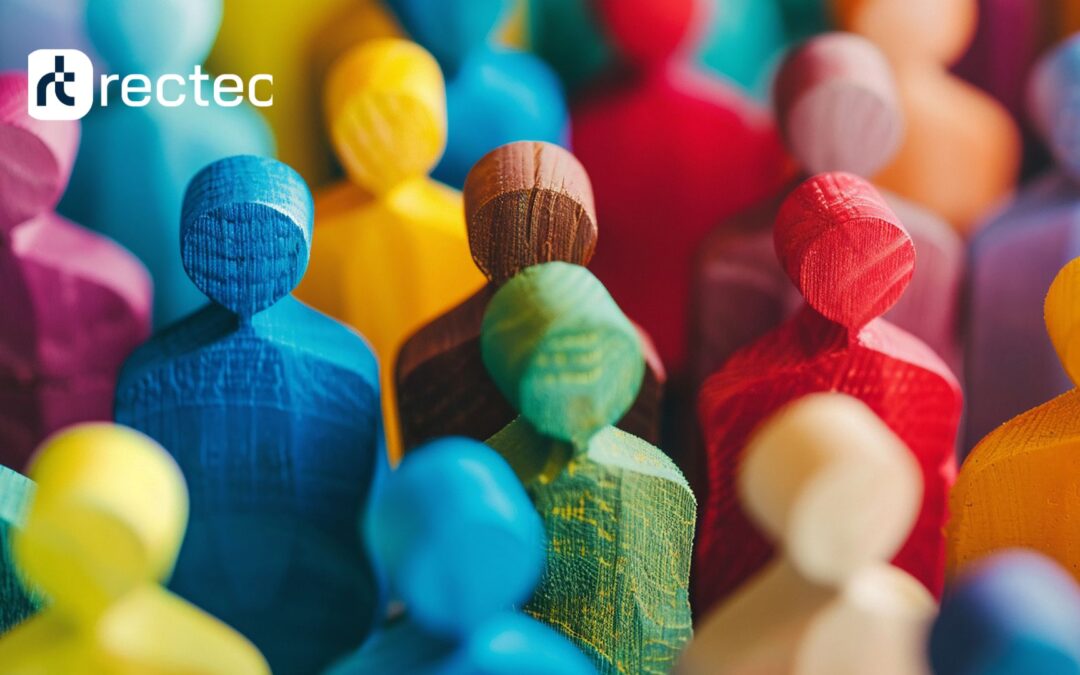Promising efficiency, speed and data driven decisions, AI is transforming the recruitment landscape, and it’s doing it quickly.
Our reliance on algorithms to sift through applications and identify the top talent is becoming stronger everyday. It’s fair to say that AI is rapidly becoming part of the everyday norm in the recruitment sphere.
But as this norm settles, a critical question emerges: are we building a more inclusive future of work, or are we inadvertently perpetuating existing biases?
The truth is, AI in recruitment is a double-edged sword.
On one hand, AI in recruitment holds immense potential to mitigate human biases, both those we are consciously aware of and those that hide in the shadows and unconsciously influence hiring processes.
By solely focusing on candidates skills, experience and qualifications, Algorithms are able to analyse vast amounts of data with a degree of objectivity that humans struggle to grasp. Also, AI can create a more level playing team by disregarding personal information like names, genders or ethnicity throughout the initial screen stages, instead it bases candidates on their merit and credibility for the job.
However, the “garbage in, garbage out” principle applies here with full force.
AI algorithms grow from the data they are fed. So, if the data may historically reflect existing societal biases (for instance, if certain groups of people are underrepresented in specific roles due to past discriminatory practices), the AI will quickly pick up on this and amplify these biases. This can lead to algorithms that inadvertently screen out qualified candidates from underrepresented groups. Effectively, it can automate inequality.
The Risks are Real:
Amplified Bias: Algorithms trained on skewed data can reinforce and even exacerbate existing disparities, perpetuating long standing vicious cycles of exclusion.
Lack of Transparency: The “black box” nature of some AI systems makes it difficult to understand how decisions are being made, hindering our ability to identify and rectify biases.
Standardisation that Excludes: Over-reliance on specific keywords or qualifications favoured in the past can disadvantage candidates with diverse backgrounds and experiences who might express their skills differently.
Erosion of Human Touch: While efficiency is key, an over-reliance on automated processes can lead to a less personalized and potentially alienating experience for candidates, particularly those from marginalised communities who may value human connection and understanding.
Building an Inclusive Future with AI
The good news is that these risks are not inevitable.
If we are able to consciously embed principles based on strong diversity and inclusion into the design, development and implementation of AI-driven recruitment tools then we can harness their power for good.
Here’s how:
Diversify the Data: Actively work to ensure training datasets are representative of the diverse talent pool available. This might involve augmenting existing data with broader sources and carefully curating information to mitigate historical biases.
Focus on Skills and Competencies: Design algorithms that prioritise demonstrable skills and competencies relevant to the role, rather than relying on proxies that might be correlated with demographic factors.
Implement Bias Detection and Mitigation Strategies: Utilise techniques to identify and mitigate bias within the algorithms themselves. This requires ongoing monitoring, auditing, and a willingness to retrain models as needed.
Maintain Human Oversight: AI should augment, not replace, human judgment. Recruiters play a crucial role in reviewing AI-driven recommendations, identifying potential biases, and ensuring a fair and equitable process. An ongoing commitment to self education in terms of eliminating bias is paramount for this to work. (Read, watch, learn, network… continually)
Promote Transparency and Explainability: Demand greater transparency from AI vendors regarding how their algorithms work. Understanding the decision-making process is crucial for building trust and identifying potential issues.
Continuously Evaluate and Iterate: Regularly assess the impact of AI tools on diversity and inclusion metrics. Be prepared to adapt and refine strategies based on real-world outcomes.
The Responsibility Lies with Us:
There’s no denying it, AI is an extremely powerful tool.
But its impact on diversity and inclusion in recruitment, whether good or bad, ultimately boils down to the intentions and actions of those that create and use it.
By prioritising fairness, transparency and commitment to inclusivity, we can ensure that AI becomes a force for positive change. Use it correctly and it can build a future of work where everyone has the opportunity to thrive.
Don’t allow algorithms to perpetuate the current gatekeepers of equality. Instead, let’s work together to harness the power of AI to build truly diverse and inclusive workplaces. The future of talent depends on it.
A quick, responsive process is what you need to attract and engage the best talent.
At Rectec we help organisations to find the best Applicant Tracking System, best Recruitment CRM, or best HRIS to suit your needs, accompanied by our unique complementary technology marketplace, to help you build the perfect recruitment tech stack for your business.

